10.06.2025 - 14.09.2025

10.06.2025 - 14.09.2025


This exhibition revives a forgotten chapter in the cultural relations between Spain and Mexico: the large number of artworks linked to the cult of the Virgin of Guadalupe which were sent over from the capital of the viceroyalty and dispersed all over Spain between the mid-seventeenth and early nineteenth centuries. This unprecedented phenomenon of devotional and artistic transfer, which has continued up to the present day, is unparalleled in any other part of Europe.
A few years after the conquest, the apparitions of Guadalupe left an imprinted image of this Virgin in the manner of a mandylion. Because of its sacred nature, the story of Mary’s apparition was spread far and wide and became politicised by the Hispanic Monarchy in defence of causes like the mystery of the Immaculate Conception. This was undoubtedly the first globalised religious devotion, as the cult also radiated to Italy, Portugal, the Philippines and the viceroyalties of South America.
The Virgin of Guadalupe is not only the image most frequently represented by the artists of New Spain, whose copies retain their status as a “revealed icon” with immanent power, but it is also laden with cultural and political significances and embodied in a widely diverse iconography. The exhibition leads visitors through the complex connections and common interests that brought communities, corporations, nobles and merchants closer together despite vast distances. In this network, certain regions like Andalusia, Castile and the Cantabrian coastline acquired special prominence. This was due to three productive and administrative factors: trade, mining, and the posting of high officials to the Indies, beginning with the viceroys and the archbishops.
The exhibition also offers a counterpoint with related or complementary examples from the painting of the Iberian Peninsula itself. It comprises eleven thematic sections that interrelate to illustrate common themes and types and, above all, to elucidate the function of these “true likenesses”, narrative scenes, landscapes and allegories, whose visual diversity is considerable.
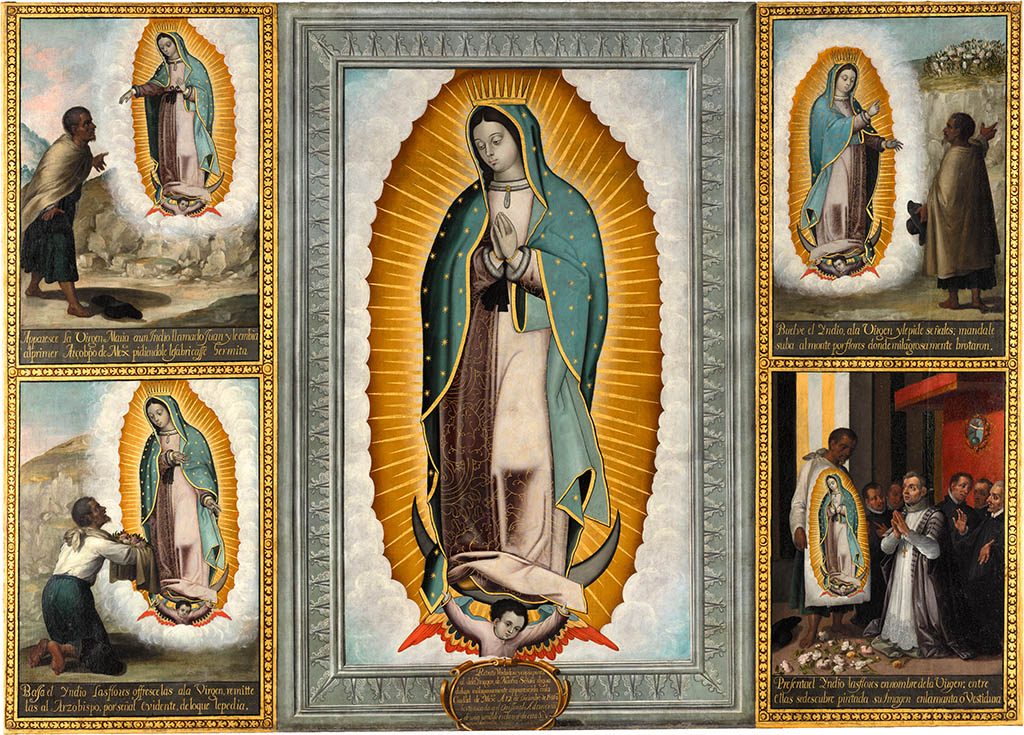
Image and Apparitions of Our Lady of Guadalupe, José Juárez (1617-1661), Oil on canvas, 1656, Ágreda (Soria), monasterio de Sor María de Jesús de Ágreda
Telling and spreading the story compares examples of Spanish painting with others from overseas in order to define the visual referents employed in transmitting the narrative of the Guadalupan apparitions.
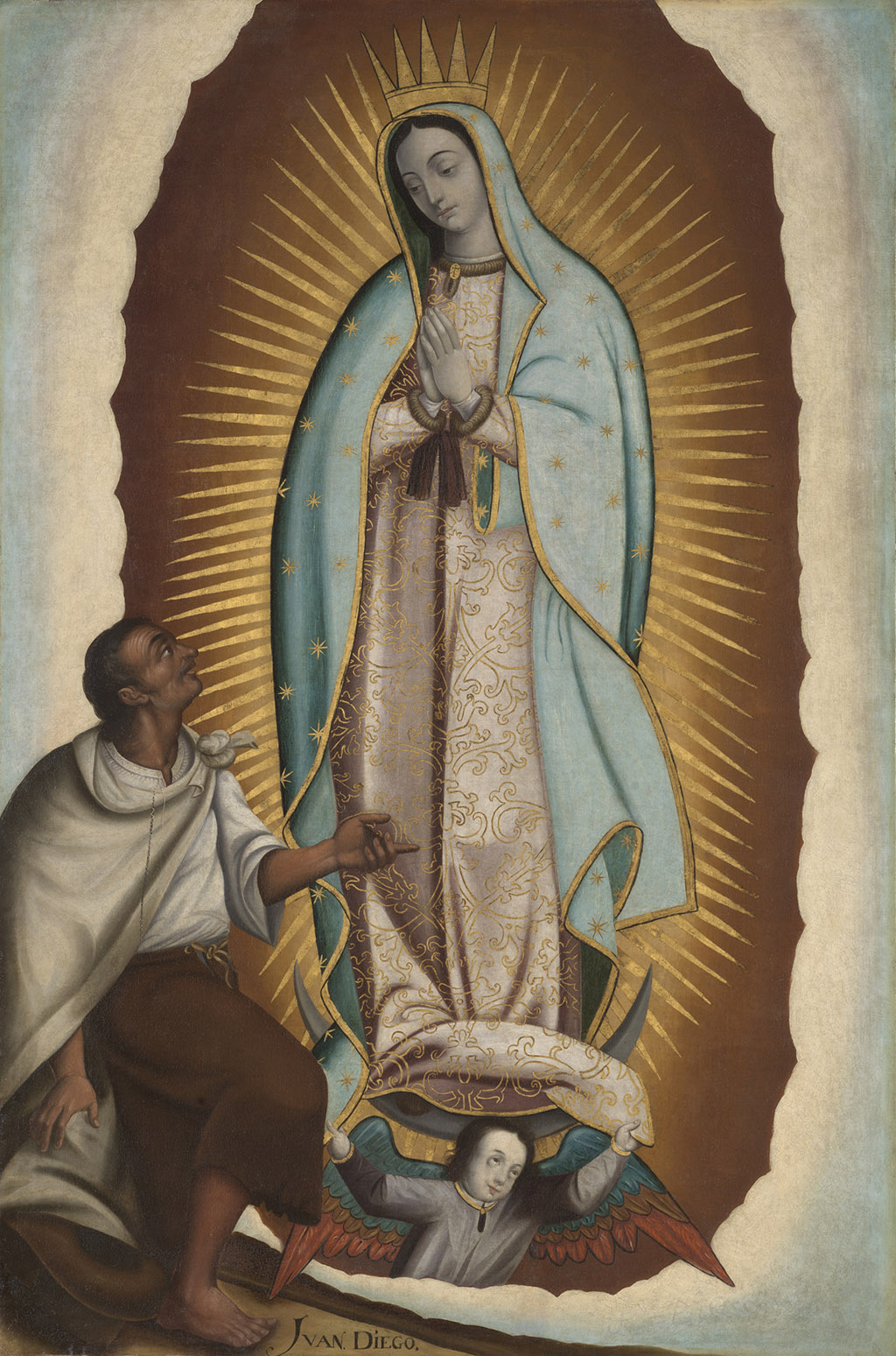
First Apparition of the Virgin of Guadalupe, Unknown authorship (Puebla), Oil on canvas, c. 1690-1720, Jerez de la Frontera (Cádiz), iglesia de San Miguel
Lineage and typology of the holy image emphasises the links between La Guadalupana of Mexico and late Gothic and Renaissance Marian types in Europe, and with the advocations or titles of Tota Pulchra, the Immaculate Conception or the Apocalyptic Woman.
Icon and divine brush situates the Virgin of Guadalupe in the context of the revealed or non manufacta icon, understood through the notion of the Deus Pictor as a reflection of the intellectual concepts of the Almighty.
The cloak as relic shows how antiquity and tradition have consecrated the image as one of immanent sacred power.
Concealing and revealing the image for worship looks at the cultural traditions established around an image that is housed in a tabernacle.
Through works in exotic materials like ivory and mother-of-pearl, In the Asian wake. The Manila galleon illustrates the geographical extent of this cult, which spread to the trans-Pacific route.
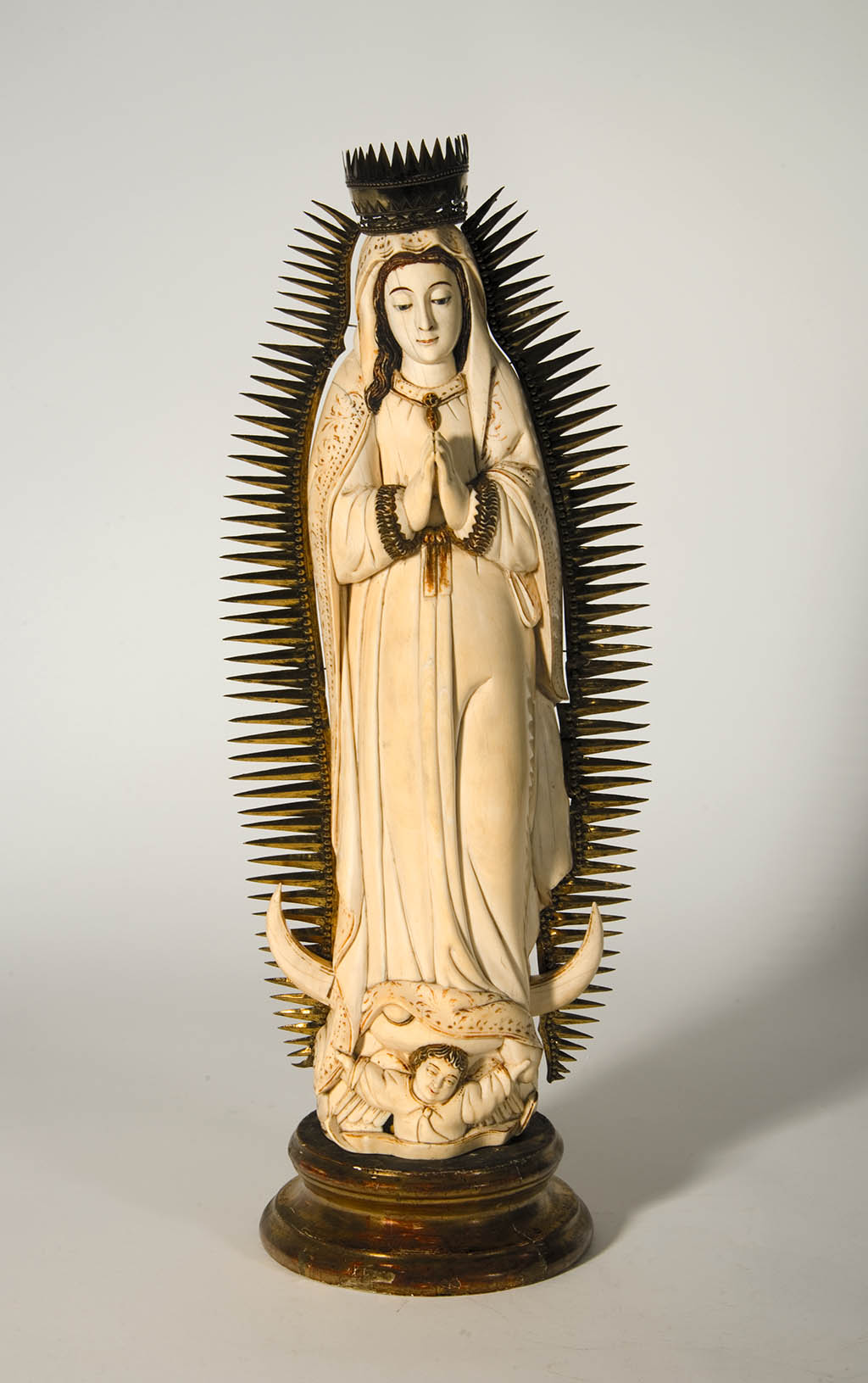
Virgin of Guadalupe, Hispano-Philippine workshop, Polychrome ivory and brass, c. 1650-1700, Madrid, Museo Arqueológico Nacional
The Peninsular model meanwhile shows how Spanish artists took part in the production of Guadalupan images.
The Guadalupan oath. Patroness of New Spain and protector of the Monarchy brings together several allegorical works that appeal to the sense of belonging and protection aroused by the papal bull of 1754 confirming the patronage of Our Lady of Guadalupe and the assignation of a liturgical feast for her worship.
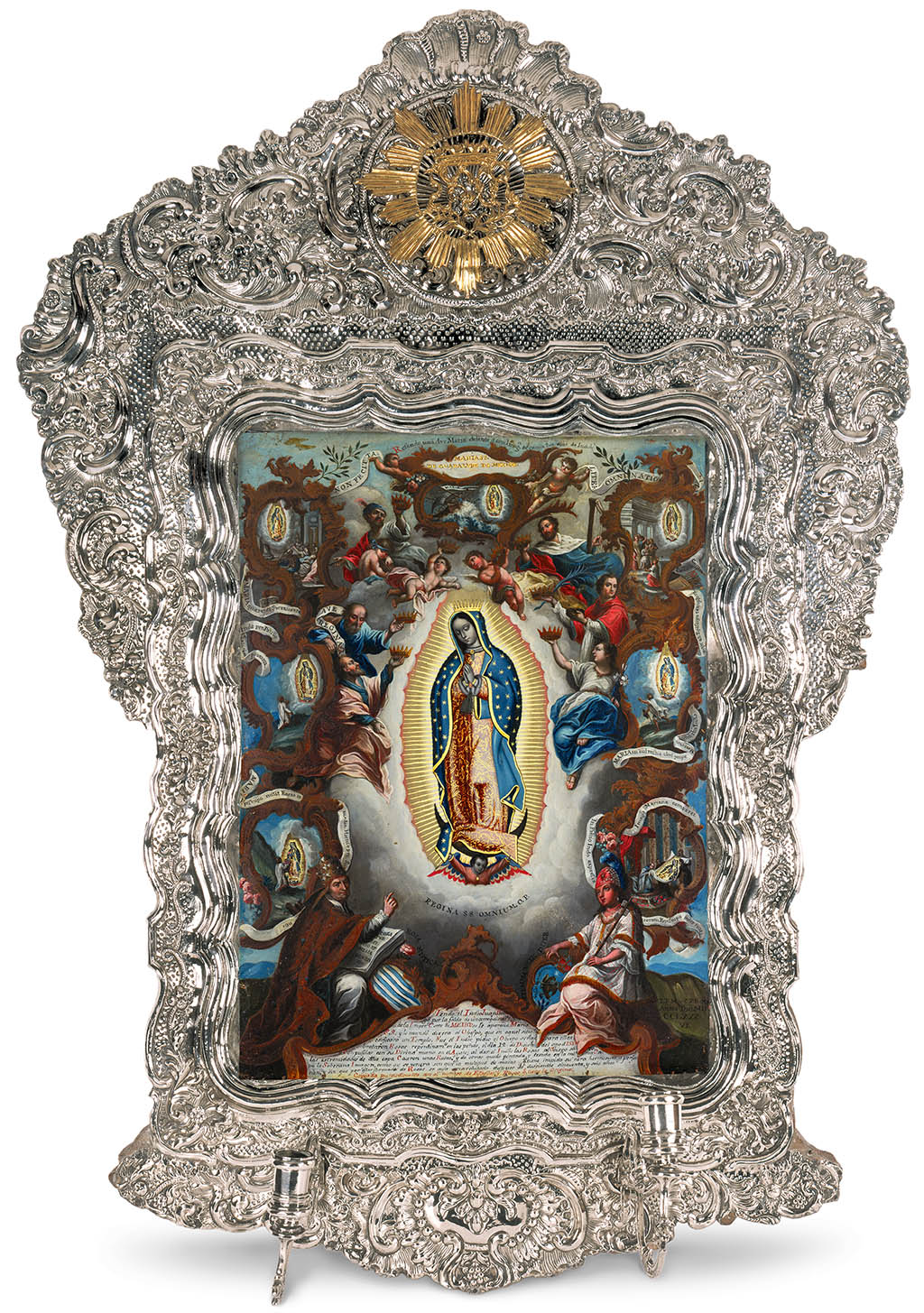
Allegory of the Patronage of the Virgin of Guadalupe over New Spain, Unknown artist, Oil on copper, 1786, Mexico City, Colección Pérez Simón
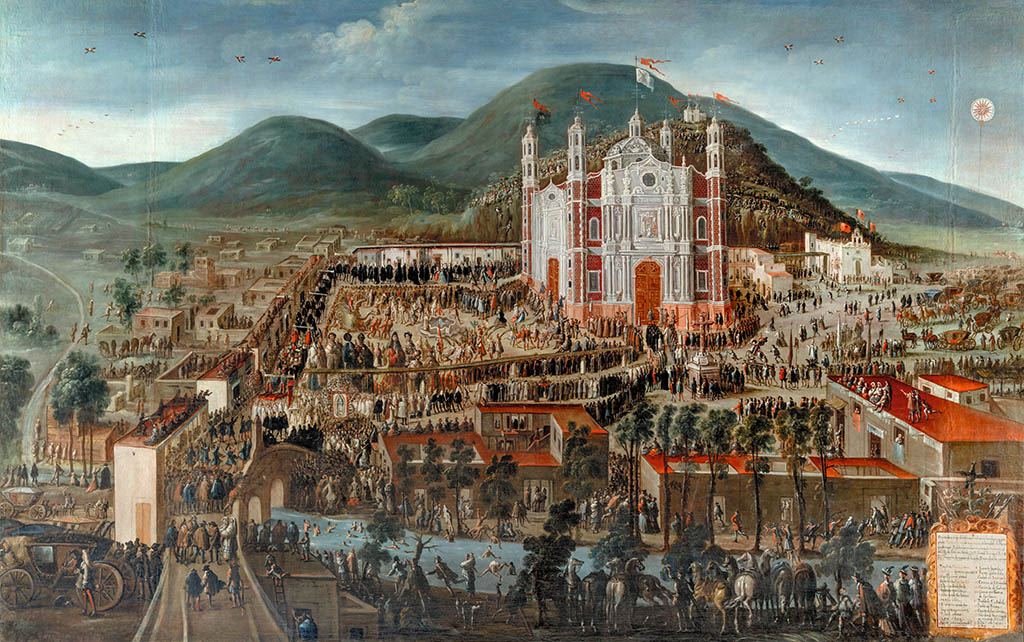
Translation of the Image and dedication of the Shrine of Guadalupe, Manuel de Arellano (1662-1722), Oil on canvas, 1709, Colección Hermanos Osorio
Place, memory and location: the shrine includes several views of Tepeyac, the site of the apparitions, which became a pilgrimage destination.
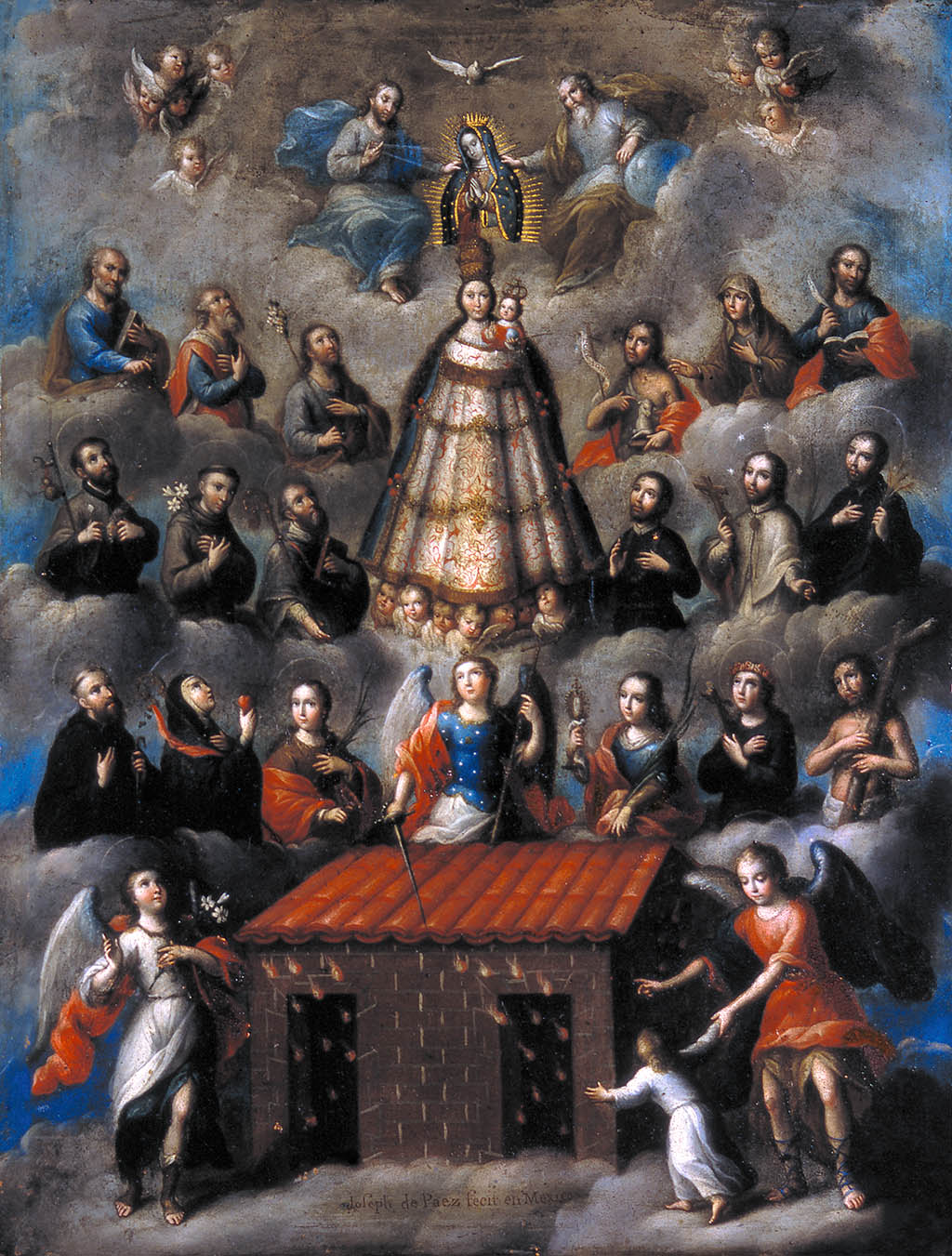
Image of the Virgin of Loreto (The Soul of the Virgin is Guadalupan), José de Páez (1721-1777), Oil on copper, before 1770, Madrid, Museo de América
The glorification of the Vera Effigies displays not only the most beautiful works but also those with honorary and laudatory ornamental motifs celebrating the image’s holy status.
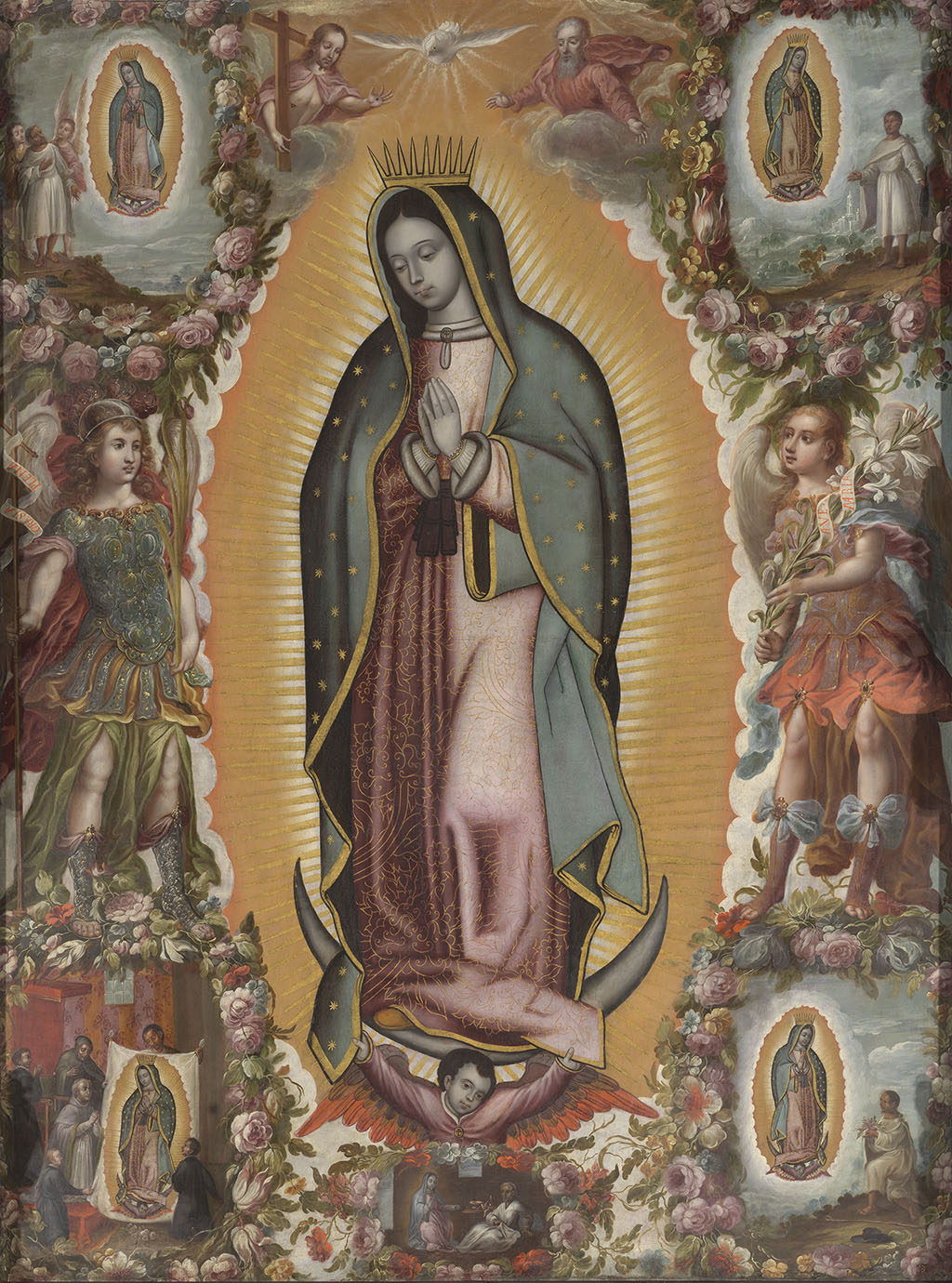
Virgin of Guadalupe with the Five Apparitions and the Archangels Michael and Gabriel, Attributed to Juan Correa (c. 1646-1716), Oil on canvas, c. 1700-16, Villalón de Campos (Valladolid), parroquia de San Miguel Arcángel
Finally, in Creation, copy and materiality, the public will learn about the technical expertise necessary for making exact copies and portraits of the Virgin, which played a central role in the scientific and artistic debates that followed the inspections of Juan Diego’s cloak.
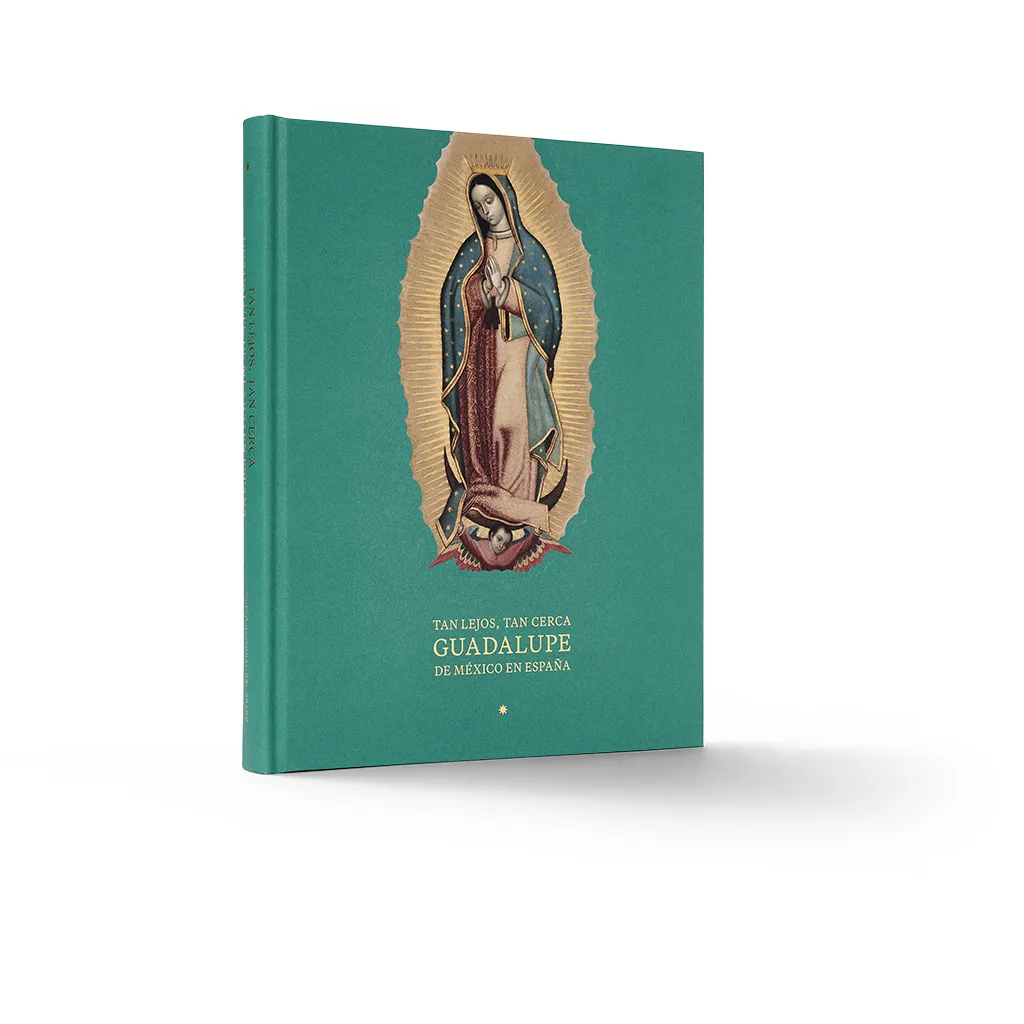
Spanish
32€
Compra ahora
Director: D. Joan Molina. Universidad de Girona
D.ª Ana Moreno Rebordinos. Coordinadora General de Educación
Mostrador de educación
80 € (descuentos aplicables)
More infoMonday to Saturday: 10.00 am - 8.00 pm
Sundays and holidays: 10.00 am - 7.00 pm
6 January and 24, 31 December: 10.00 am - 2.00 pm
Last admission 30 min before closing time
Visitors must leave the galleries 10 min before they close
1 January, 1 May and 25 December
Open until 30 min before closing time
www.museodelprado.es and ticket office
91 068 30 01 / cav@museodelprado.es
Standard ticket: 15 €
Reduced price ticket 7,50 € (with proof of status)
Spanish and English
Includes the Collection and temporary exhibitions
On sale at the ticket office and online
Sponsored by:

With the collaboration of:
